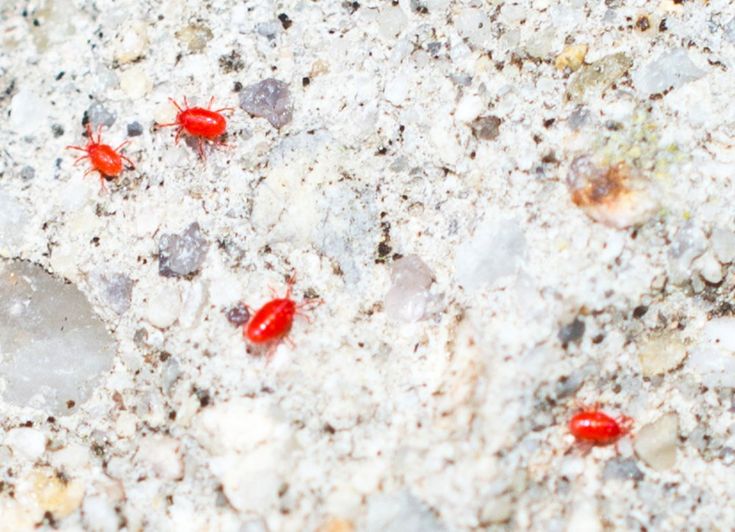Cacti, the steadfast sentinels of arid landscapes, epitomize resilience and beauty, providing dramatic splendor to any garden. However, even these remarkable plants can fall victim to a diminutive foe: clover mites. These tiny arachnids may seem innocuous at first glance, yet their colonies can wreak havoc on your beloved succulents. Understanding how to identify and eradicate clover mites from your cacti is essential for maintaining their health and vibrancy.
In the grand tapestry of nature, every thread plays its role. Clover mites, with their vibrant red hue, blend into the fabric of springtime, yet their presence on your cherished cacti can signify an encroachment of unwelcome guests. Recognizing their marks and understanding their habits is the first step in reclaiming your plants from this minuscule menace.
Let us embark on a journey to uncover the secrets of clover mites and explore the strategies to curb their proliferation.
Identifying Clover Mites: The Harbinger of Infestation
Observation, the cornerstone of effective pest management, begins with knowing what to look for. Clover mites (Bryobia praetiosa) are minute, often measuring no more than a millimeter in length. Their bright red or greenish-brown color allows them to blend in with the lush foliage of spring. Small as they are, their presence is often betrayed by the delicate webs they weave and the stippling damage they inflict on the surface of plant leaves.
The havoc wreaked by clover mites manifests as yellowing or browning patches on cactus pads, making them appear sunburned, as if the very essence of life is being siphoned away. Close inspection may reveal tiny feeding marks—unmistakable indicators of their activities. In absence of vigilance, infestations can escalate, leading to a dramatic decline in plant vitality.
To preemptively strike against these arachnid adversaries, it’s crucial to monitor your cacti regularly. New growth is especially inviting to clover mites; thus, diligent scrutiny of young pads offers a first line of defense. The earlier you detect their presence, the easier it is to thwart their insidious advance.
Reconnaissance and Removal: Strategies for Eradication
In the relentless pursuit of a clover mite-free cactus, you possess a multitude of strategies at your disposal. Establishing a comprehensive approach is key to reclaiming your plants, restoring their rugged beauty and ensuring they flourish in splendid isolation from these pests.
One of the simplest yet most effective measures is to remove any infested foliage. If a few pads are compromised, snip them away with clean and sterilized scissors. Remember, sanitation is paramount. Proper disposal of affected parts prevents mites from either re-infesting or spreading to adjacent plants.
In addition to manual removal, employing a forceful approach with water can dislodge clover mites from cacti. A gentle but firm spray of water can disrupt their stronghold, forcing them off the leaves and disrupting their nests in the process. Be careful, however, as too much water may harm drought-tolerant cacti. Aim for a balance that invigorates the plant without overwhelming its delicate systems.
Integrating insecticidal soap or horticultural oils also proves beneficial in combating clover mites. These products smother the pests and can provide an effective barrier, inhibiting any further development of their populations. Apply insecticidal soap in the early morning or late evening to avoid direct sunlight, which may harm your cacti and enhance efficacy in targeting the mites.
Additionally, fostering an environment that attracts natural predators—such as ladybugs or predatory mites—can aid in keeping clover mite numbers at bay. This symbiotic relationship exemplifies the delicate balance of nature, where every creature contributes to ecosystem health, including the health of your cacti.
Long-term Prevention: Cultivating Resilience
Prevention, as they say, is the best medicine. An ounce of avoidance can save a pound of cure in the realm of cactus care. Establishing a robust regimen for your cacti will discourage clover mite infestation well into the future.
Firstly, maintaining optimum conditions for growth is vital. Cacti thrive in well-draining soil and require precise watering schedules. Overwatering invites not only root rot but also creates an inviting habitat for pests. Additionally, ensure they receive adequate sunlight—natural light bolsters their resistance and creates a less hospitable environment for clover mites.
Implementing regular inspections and routine cleaning of your plants and their surroundings can help control any potential outbreaks before they spiral out of control. Dust and debris provide ideal hiding places for pests, acting like a refuge where they can multiply undetected.
Furthermore, diversify your collection. By integrating various plant species, you can create a more balanced ecosystem that naturally counters the presence of single-plague species like clover mites. Mixing cacti with other flowering plants may not merely enhance the aesthetic appeal of your space, but also promote reciprocal defenses against pests.
In conclusion, understanding the delicate interplay between cacti and their pests, such as clover mites, enhances not only the art of cultivation but promotes a deeper appreciation for these unique plants. With vigilant observation, timely intervention, and preventive care, we can safeguard the unparalleled beauty of cacti against the overshadowing threat of infestation. Drag the light back into your garden, and let the joyous dance of rejuvenation begin.





Leave a Comment